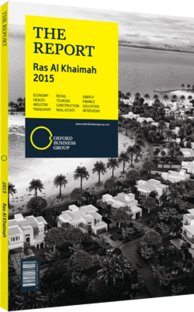Equestrian culture is alive and kicking in Ras Al Khaimah
As the ancient Arabic proverb says, “Horses know their horsemen the best”. Indeed, “not everyone has the ability to connect with a horse,” according to Nikolas Santek, the stable manager of the Al Wadi Equestrian Adventure Centre. This may ring even truer for the Arabian horse, which must identify its riders and caretakers by the sound of their walk, as Arabian horses’ vision is generally poor. The horses are famed for their endurance, strength and loyalty – not to mention their beauty. Prized for centuries, they remain widely sought after, and are a source of both personal pride and social status for their owners.
Harsh Desert Climate
Centuries of isolation have helped to shape the unique qualities of the Arabian horse, which over time honed its physical prowess by traversing expansive swathes of desert in the lands that today make up the modern UAE. Bedouin breeders insisted on maintaining the purity of the horse’s blood, believing that it would give them the best chance of facing down the harsh desert climate, and of winning long drawn out battles. While it is believed to be one of the world’s oldest surviving breeds, its origins remain clouded in uncertainty, with many claiming the horse originated in northern Syria and southern Turkey. Indeed, its first appearance on the Arabian Peninsula stretches back to 2500 BCE.
The Arabian horse has five primary ancestors: Kaheela, Ebia, Dahma, Showeimah and Saqlaweya. These are all celebrated at Dubai’s Horse Museum, with rooms devoted to bloodlines, physiology and the role of the Arabian horse in classical literature. The museum also features photographs and artifacts from various sites with a significance in the UAE’s equestrian history.
One site that has yielded many important discoveries over the years is at Meleiha, a small village south of Al Dhaid, about 50 km from the coast in Sharjah. Investigations that took place in Meleiha from the 1970s onwards have uncovered a pre-Islamic settlement that included a large tomb, with the remains of horses and camels alongside those of their owners. A horse’s bridle, decorated with metal rings and gold plates, was dated to be from as far back as 300 BCE.
Equine Heritage
Arabian horses tend to be classified according to their place of origin. For example, Hejazis are famed for their black eyes, strong hooves and ankles, while the Najdi have long necks, lean faces, small ears, broad buttocks and thighs. Yemeni horses have coarse, thick bodies, short necks, thin buttocks and thighs. Syrian Arabians, meanwhile, boast beautiful colours, wide eyes, bald foreheads, soft hooves and big jawbones. From the 1990s onwards, the UAE began to cultivate its equine heritage more seriously, making efforts to preserve local breeds and issuing internationally recognised birth certificates.
A royal stable – among the oldest in the entire UAE – has been situated in Ras Al Khaimah for nearly 50 years, and horses continue to be used to patrol local villages by night. “The decline of the horse as a tool of battle and transport was largely inevitable, but this is not to say that the Arabian horse has lost its relevance– far from it,” Santek said. “The horse has become a source of passion – and more widely accessible to the public too.”
Situated close to the renowned Banyan Tree Al Wadi Resort sits the newly opened Al Wadi Equestrian Adventure Centre, which offers riding lessons and has become a popular place for tourists to experience local equestrian culture. Horses are taken on desert walks, and are given daily exercises to take such as jumping. While this may seem a far cry from the battlefields on which the Arabian horse once trod, it represents a more appropriate setting for equestrian life in these modern times.
You have reached the limit of premium articles you can view for free.
Choose from the options below to purchase print or digital editions of our Reports. You can also purchase a website subscription giving you unlimited access to all of our Reports online for 12 months.
If you have already purchased this Report or have a website subscription, please login to continue.

